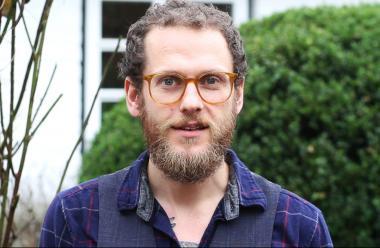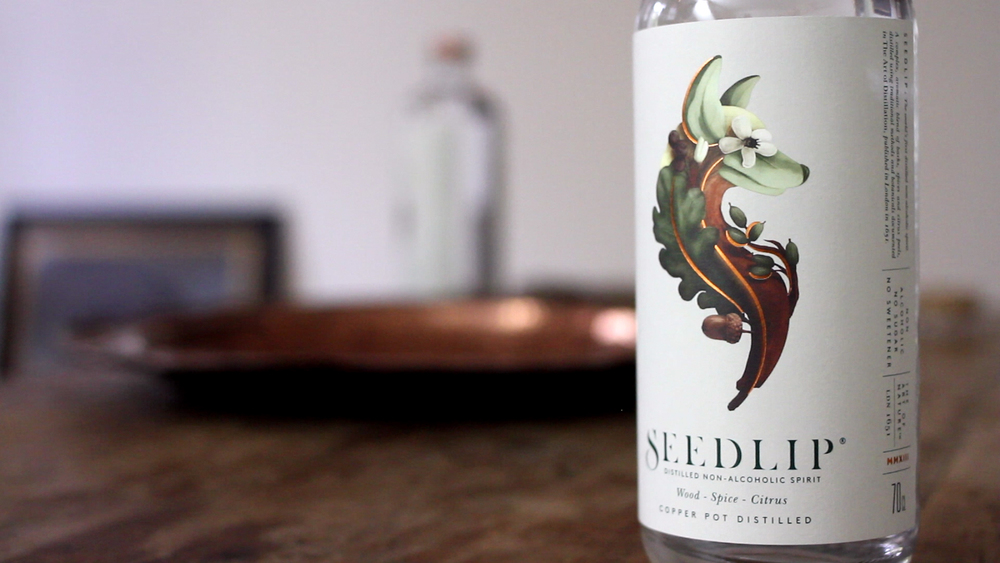Challenger brand profile: Seedlip

What led you to start Seedlip?
It was a combination of three things coming together at the same time. My family’s been farming for 300 years up in the north of England, and so nature, the land and farming are massively important to me.
Secondly, having worked on lots of other people’s brands for ten years, I wanted to have my own brand. I did a lot of work within the drink space and I noticed this grey area between alcohol and soft drinks. There is also the on-going war with sugar and the trend that consumers are willing to spend more for less.
Thirdly, I love food and cooking and I started looking into old herbals, so back when you would have the spice cabinet and medicine cabinet in your garden. And this led me to the a book written in the 17th century called The Art of Distillation, in which both alcohol and non-alcohol remedies are made using distillation. This was a light bulb moment and it made me wonder. So I set up a copper distil and started experimenting by picking ingredients from my garden. We use two spices, two barks and two citrus peels. You’ve got a good, long, grapefruit citrus finish. This is something to sip. It’s not something to gulp down. There’s an adult aspect to this.

How is it different to what’s already on offer?
If somebody orders a whisky and coke, and somebody orders a Seedlip and tonic, the bartender does exactly the same thing. He takes both bottles off the back bar, he pours measures, he fills a glass with ice, and he tops up with a mixer. I don’t know of other non- alcoholic drinks where that happens. All of the work has been done on rituals around drinking - serving Hendricks and cucumber - all of that fantastic richness that’s now ingrained in people’s brains, we’re bringing that into non-alcoholic drinks. I think that’s probably the single most powerful thing that we’ve done.
"It is like being a sponge to all these fantastic bits of inspiration and then bringing them together to help create Seedlip."
Ben Branson.
What other brands did you look to for inspiration?
I looked at the category cues of a spirit, of soft drinks and then I also looked outside the category. I looked at Rapha, Aesop, Farrow and Ball, Hiut Jeans and then magazines such as Cereal. It is kind of like being a sponge to all these fantastic bits of inspiration and then bringing them together to help create Seedlip.


How do you make decisions on the brand?
There’s a benchmark that I’ve certainly held other brands that I’ve worked on accountable to. There has been times where I’ve felt I’ve got under the skin enough of a brand that I know when something is right or wrong for it and I don’t believe that really exists on paper. I don’t think you can just create a diagram or write that in a sentence, it is instead about a feeling.
Brands mean different things to different people and they live in people’s heads and therefore it does mean something different. The art of nature is certainly a guiding phrase that I use and hold Seedlip accountable to. To me what is more important is, does it feel right? Are we creating something that’s desirable, beautiful and attractive that has real meaning and relevance?
"I am a big believer in not having to necessarily declare everything and allowing things to be discovered or deduced."
Ben Branson.
How do you communicate Seedlip as premium?
Ultimately we never say that we are premium. We never declare it, but I think if you looked at our bottle and felt our paper all of those premium cues are coming through. I am a big believer in not having to necessarily declare everything and allowing things to be discovered or deduced. From my experience of luxury and premium brands, they do a fantastic job of less is more. We didn’t even have a website until the first day that we launched, and even now it is very simple.

What’s your strategy for growth?
Our big focus is going where this problem is, what you drink when you’re not drinking. And that means predominantly the on trade, hotels, bars, restaurants, members clubs - and we start at the top, at the most influential accounts. My focus is London for the next six months to prove the concept and then to take the brand to the world stage. We will also work on two new products and build a team.
Who do you see as your competition?
Our direct competition is what’s already in non-alcoholic menus, so it’s that blend of fruit juices, it’s the other three options in the non-alcoholic menu. I remember doing some work with a client and they told me typically a human being has a repertoire of six drinks. You get tea, coffee, milk, water, alcohol of some sort and soft drink. There may be some variations, but these are the broad categories of how we go through our lives and drink. I don’t know if we’re trying to create a seventh that means when you’re not drinking alcohol it equals Seedlip, because tea, coffee, water, soft drinks don’t currently occupy that space in the brain. I’m quite tentative about that because that’s even bigger and scarier. We’re actually trying to add one that solves a problem and fits a need and an occasion. It’s not an easy process to replicate but as Vita Coco are experiencing with Innocent coming into the coconut water category, direct competition can be fantastic. Innocent are actually bringing a whole load of new people into their category. They’re allowing Vita Coco to grow the category, which is a good thing for them. So if nobody tries to copy Seedlip, it will be because we are not successful… although that’s not an invitation…
How are you getting the word out?
There is huge appetite for new things in the industry, particularly to help at a bar, restaurant or hotel to better the experience of guests. We’re trying to solve a problem and we’re really single-minded about that. When you have the best bartenders and influencers endorsing you, and effectively doing your marketing through word-of-mouth it is pretty overwhelming, and provides us with confidence that the time is now and that the opportunity is there.
Someone said to me the other day, your website is on page three of Google; that’s terrible. But I’m really not bothered. We’re on Twitter and Instagram. I can see the impact of word of mouth and that is of far more value than a billboard. I much prefer this under the radar discovery, people talking about us in a tangible, real world. The website is great and it’s a good resource for people to see, but I’d far rather read the articles, I’d far rather ten press articles from the trade come up with bartenders saying how fantastic Seedlip is than me having to write how great Seedlip is.

"This will hopefully spark debate which encourages hotels, bars and restaurants to think about their non-alcoholic offering more seriously."
Ben Branson.
What is Seedlip challenging?
We’re challenging the actual experience of how a non-alcoholic drink is made. We are challenging the notion of why you drink something, whether it needs to have alcohol in or not. We’re challenging the debate around sugar. And then we’re also challenging the industry, both the alcohol industry and the soft drinks industry, by trying to find our own way in the middle, to find this grey area that we want to occupy in this category that we’re building. This will hopefully spark debate which encourages hotels, bars and restaurants to think about their non-alcoholic offering more seriously.
How would you define a challenger?
I think challenging something means you have to find something that needs changing. So whether that’s solving a problem, solving a need, making people’s lives easier, quicker, cheaper, better, everything else. Launching something just because you can, is never going to have that traction, because ultimately, we’re busier people. There are more things, there are more companies, there are more brands, there are more screens. So unless you’re solving someone’s problem, making his or her life better, easier, cheaper or quicker, there’s no point. You’ve got to find something that is a problem and not yet fixed.
Can you give us three bits of advice on creating a premium brand?
Number one; never compromise on quality; whether it’s hand doing things or just things taking more time, the attention to detail and doing things properly is hugely important.
Patience, it's this idea of a quiet confidence, and it can be really powerful. So sticking to your guns, a less is more approach and not having to try and do everything at once.
And three, in every single touch point of the brand you’re creating, whether it’s the product, the office or the stationery it’s got to fit together. It doesn’t have to say all the same things, but if you put everything out on a table that you’ve created, does it all feel like it’s coming from the same thing? I think the best premium brands do that. They don’t have the same aesthetic everywhere, but everything adds up to being one really powerful aesthetic.